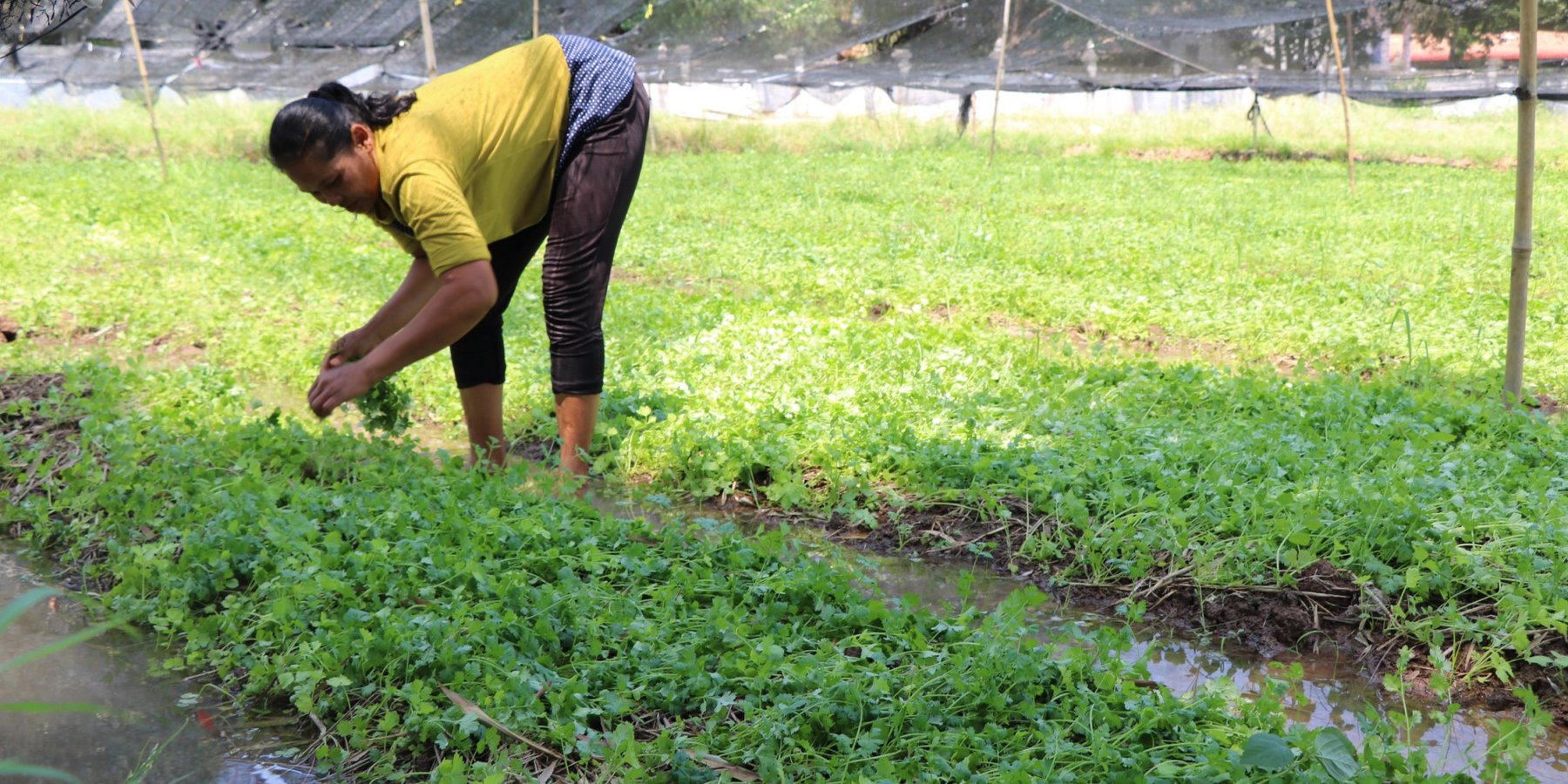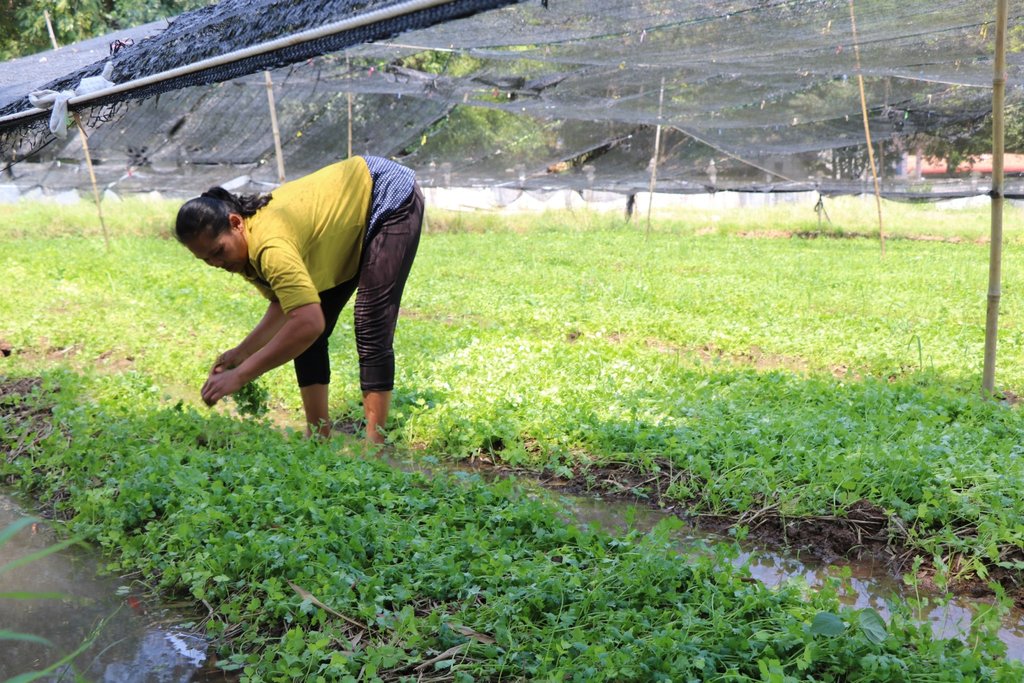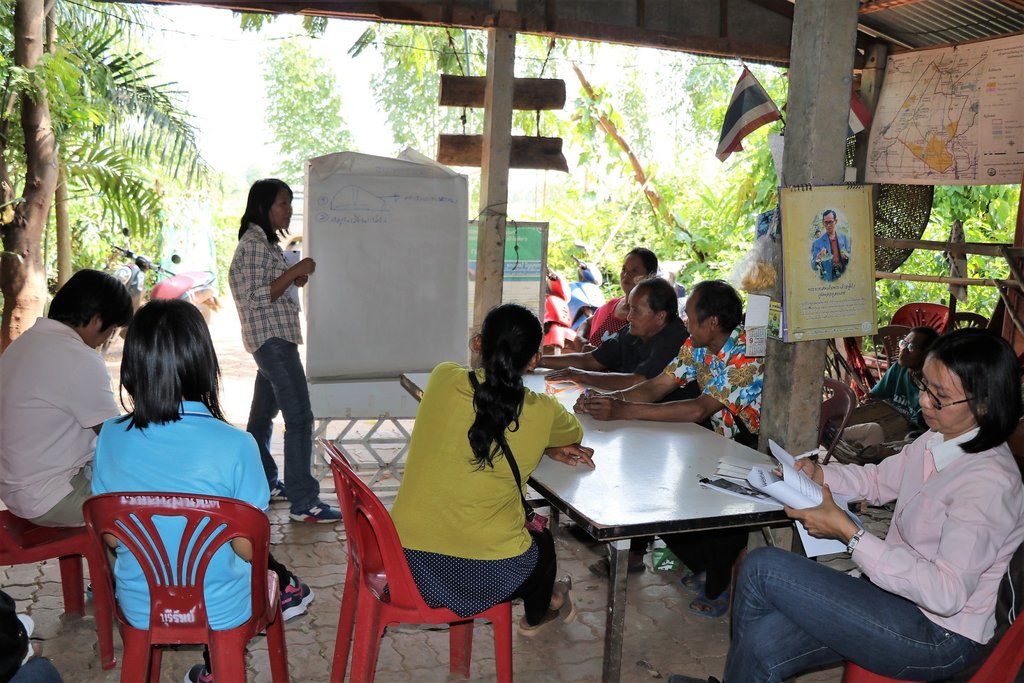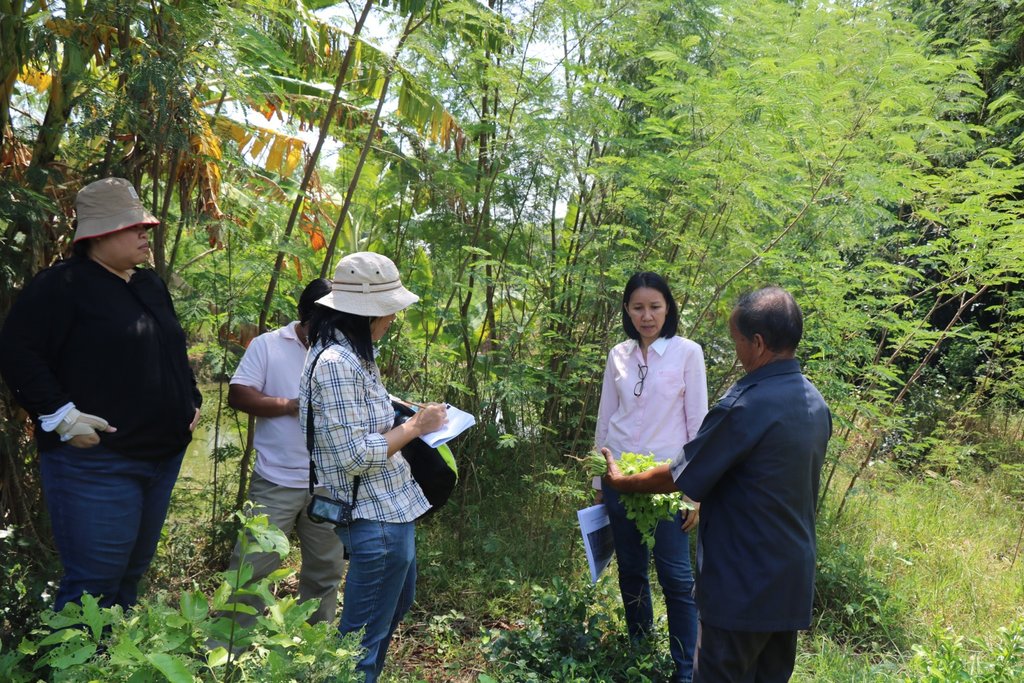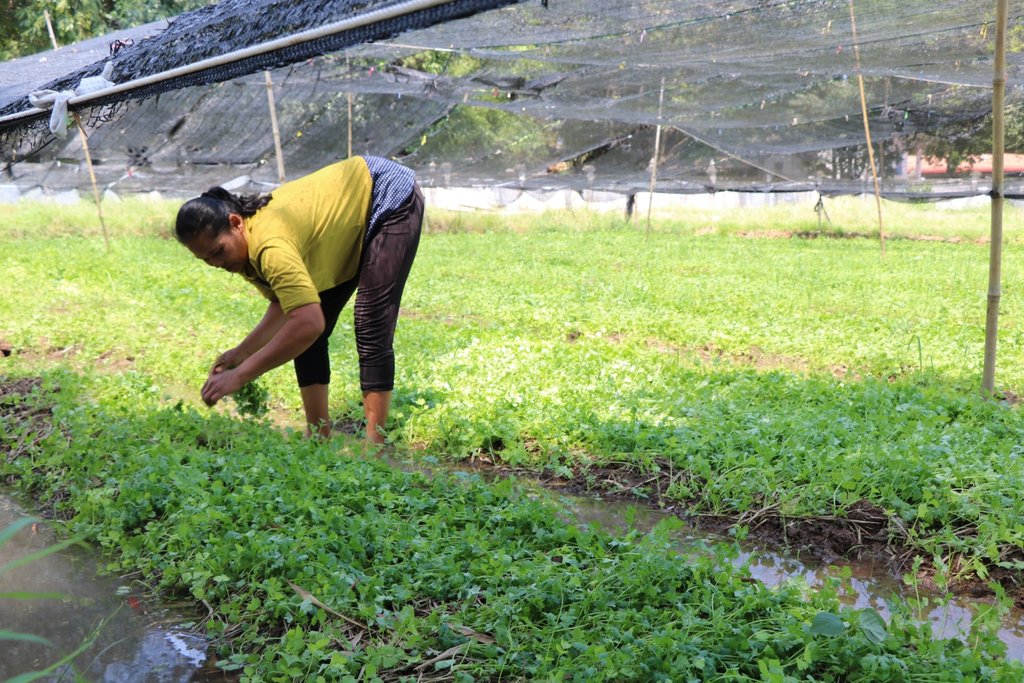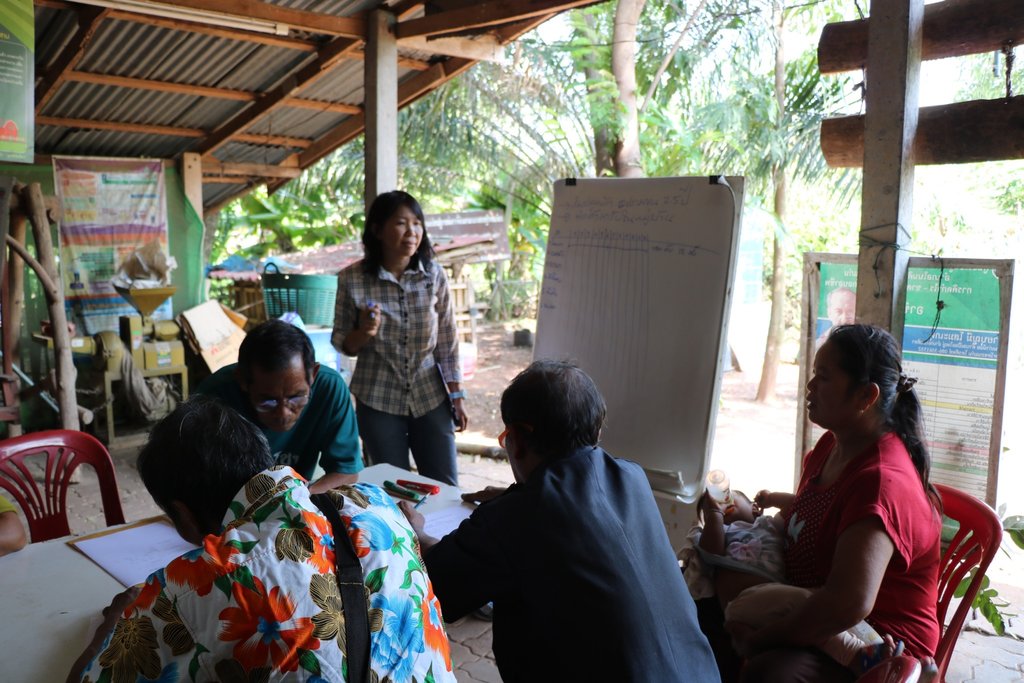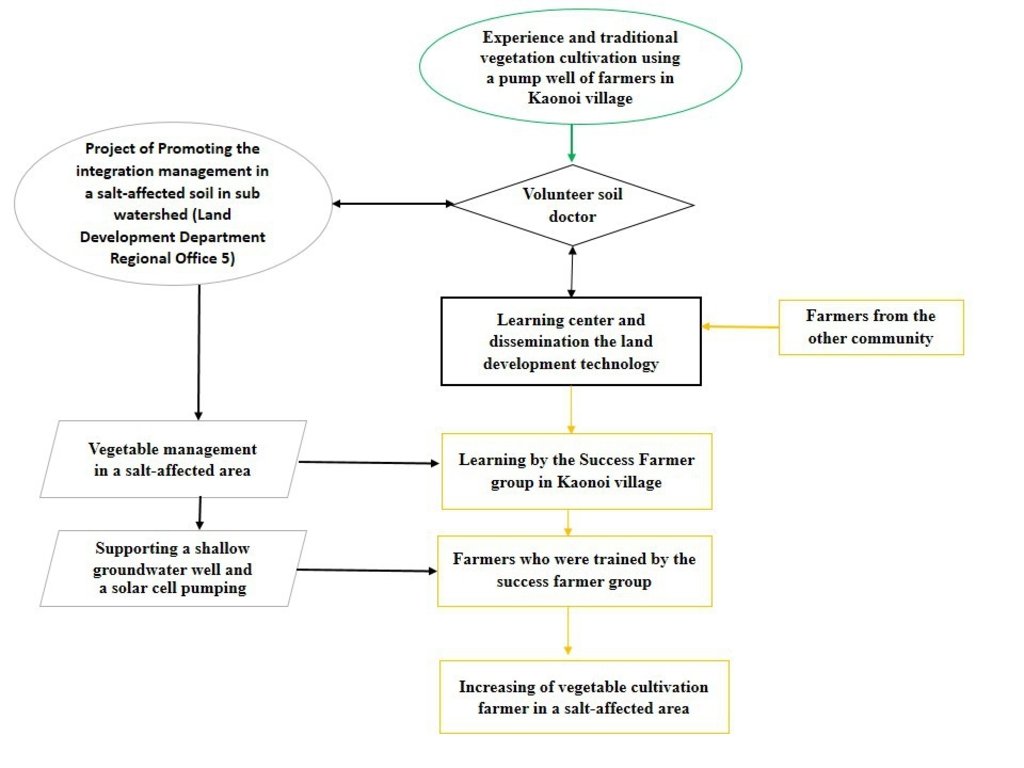Learning center and dissemination of land development technology [Thailand]
- Creation:
- Update:
- Compiler: supranee sritumboon
- Editor: –
- Reviewers: Samran Sombatpanit, Rima Mekdaschi Studer, Pitayakon Limtong, William Critchley
Learning center
approaches_4297 - Thailand
View sections
Expand all Collapse all1. General information
1.2 Contact details of resource persons and institutions involved in the assessment and documentation of the Approach
Key resource person(s)
land user:
Sommakate Boonmee
083 356 1532
Ban Kaonoi, Nonsila, Khon Kaen
Thailand
1.3 Conditions regarding the use of data documented through WOCAT
When were the data compiled (in the field)?
02/10/2018
The compiler and key resource person(s) accept the conditions regarding the use of data documented through WOCAT:
Yes
2. Description of the SLM Approach
2.1 Short description of the Approach
The learning and transfer center for land development technology was set up on the farm of the volunteer soil doctor, a farmer who was selected and trained by the Provincial Land Development Station and Land Development Department Regional Office 5 (LDDRO5) in integrated management of saline soils.
2.2 Detailed description of the Approach
Detailed description of the Approach:
The learning and transfer center for land development technology was set up on the farm of the volunteer soil doctor, a farmer who was selected and trained by the Provincial Land Development Station and Land Development Department Regional Office 5 (LDDRO5) in integrated management of saline soils. This center is used as a training facility for meetings, discussions, and sharing knowledge among farmers and officials. In addition, the center is a place to coordinate with other government agencies in the area. The volunteer soil doctor who is a landowner has played a role as coordinator between farmers and government officials: he is also a lecturer. Officers of LDDRO5 had worked on promoting the integrated management of salt-affected soils through this center. Firstly, the LDD local expert and agriculturists had discussed with the volunteer soil doctor about the process of learning and transferring land development technology. This then provided knowledge, and encouraged farmers to change areas that were unsuitable for monocropping of rice to grow other crops as appropriate throughout the year, resulting in continuous and sustainable land use.
In summary the method was as follows:
1. The expert and agriculturists of the LDDRO5 had learned the technology of vegetable production from farmers with more than 25 years of experience, and achieved success in using shallow groundwater for continuous agriculture without being affected by salty groundwater.
2. They then cooperated with the volunteer soil doctor and farmers in the community for design and planning of a land development project that would be implemented in the salt-affected area.
3. The officers of the LDDRO5 set up a forum to exchange knowledge and experiences between successful farmers.
4. The officers collaborated with the government office in the district to train farmers interested in vegetable production in their salt-affected areas.
5. Then, the officers of the LDDRO5 created motivation for farmers to change areas that are not suitable for planting paddy rice to grow vegetables by supporting shallow groundwater wells and pumping with solar energy.
2.3 Photos of the Approach
General remarks regarding photos:
Interviewing the farmers at the learning and transferring center of land development technology and visiting the farm
2.5 Country/ region/ locations where the Approach has been applied
Country:
Thailand
Region/ State/ Province:
khon kaen
Further specification of location:
Longitude: 102.657778………………. Latitude: …16.018217……………………
Comments:
The learning and transferring center of land development technology was set up in Kaonoi village. That area was affected by salt. And the major crop is paddy rice.
2.6 Dates of initiation and termination of the Approach
Indicate year of initiation:
2007
If precise year is not known, indicate approximate date when the Approach was initiated:
less than 10 years ago (recently)
2.7 Type of Approach
- project/ programme based
2.8 Main aims/ objectives of the Approach
This approach was developed to provide knowledge and encourage farmers to change areas that are not suitable for rice planting to grow other crops as appropriate and to create access to the water source for farmers to carry out agricultural activities throughout the year, resulting in continuous and sustainable land use. Furthermore the aim was to provide guidelines for farmers to generate more income.
2.9 Conditions enabling or hindering implementation of the Technology/ Technologies applied under the Approach
social/ cultural/ religious norms and values
- enabling
Community is the learning area
availability/ access to financial resources and services
- enabling
Easily access financial resources because farmers could get income form vegetable product through the year
collaboration/ coordination of actors
- enabling
Government officers and the volunteer soil doctor had collaborated to evaluate project implementation
knowledge about SLM, access to technical support
- enabling
Farmer had studied from the successful farmer in the community
markets (to purchase inputs, sell products) and prices
- enabling
Merchants buying in the community. And farmers producing plants according to market demand
3. Participation and roles of stakeholders involved
3.1 Stakeholders involved in the Approach and their roles
- local land users/ local communities
Farmers are older than 55 years old
Run activities in their land
- SLM specialists/ agricultural advisers
Government officer
Support knowledge and technology
- local government
Municipality
Support information
- farmers in community
Volunteer soil doctor and successful farmer.
Coordinator and lecturer
If several stakeholders were involved, indicate lead agency:
Land Development Department Regional Office 5
3.2 Involvement of local land users/ local communities in the different phases of the Approach
| Involvement of local land users/ local communities | Specify who was involved and describe activities | |
|---|---|---|
| initiation/ motivation | self-mobilization | Farmers had developed knowledge and technology by themselves |
| planning | self-mobilization | Planning by themselves |
| implementation | interactive | Some farmer had implemented by themselves but some farmers had been supported by the government |
| monitoring/ evaluation | interactive | Collaborate with government agency to evaluate the area after the project was completed |
3.3 Flow chart (if available)
3.4 Decision-making on the selection of SLM Technology/ Technologies
Specify who decided on the selection of the Technology/ Technologies to be implemented:
- land users alone (self-initiative)
Explain:
Farmers had studied by themselves
Specify on what basis decisions were made:
- personal experience and opinions (undocumented)
4. Technical support, capacity building, and knowledge management
4.1 Capacity building/ training
Was training provided to land users/ other stakeholders?
Yes
Specify who was trained:
- land users
Form of training:
- farmer-to-farmer
Subjects covered:
Vegetable production in a salt-affected area
Comments:
The topic included vegetable production and using shallow groundwater without the problem of salt
4.2 Advisory service
Do land users have access to an advisory service?
No
4.3 Institution strengthening (organizational development)
Have institutions been established or strengthened through the Approach?
- yes, greatly
Specify the level(s) at which institutions have been strengthened or established:
- local
Describe institution, roles and responsibilities, members, etc.
The learning and transferring center of land development technology was set up in the community to be used as a training facility, for meetings, discussions, and sharing knowledge among farmers and official.
Specify type of support:
- capacity building/ training
Give further details:
Location for a training facility and sharing of knowledge
4.4 Monitoring and evaluation
Is monitoring and evaluation part of the Approach?
Yes
Comments:
Government, volunteer soil doctor and farmer
If yes, is this documentation intended to be used for monitoring and evaluation?
Yes
Comments:
This document will be used for the evaluation guidelines
4.5 Research
Was research part of the Approach?
No
5. Financing and external material support
5.1 Annual budget for the SLM component of the Approach
If precise annual budget is not known, indicate range:
- 10,000-100,000
5.2 Financial/ material support provided to land users
Did land users receive financial/ material support for implementing the Technology/ Technologies?
No
5.3 Subsidies for specific inputs (including labour)
- labour
| To which extent | Specify subsidies |
|---|---|
| fully financed | Farmer work by themselves |
- equipment
| Specify which inputs were subsidised | To which extent | Specify subsidies |
|---|---|---|
| machinery | fully financed | Farmer work by themselves |
| tools | partly financed | Land Development Department Regional Office 5 supported water pump with the solar energy |
- agricultural
| Specify which inputs were subsidised | To which extent | Specify subsidies |
|---|---|---|
| seeds | fully financed | Farmer work by themselves |
| fertilizers | fully financed | |
- construction
| Specify which inputs were subsidised | To which extent | Specify subsidies |
|---|---|---|
| fully financed | Farmer work by themselves | |
| wood | fully financed | |
| shading net | ||
If labour by land users was a substantial input, was it:
- voluntary
Comments:
Farmer work by themselves but LDD supports production material for producing compost and the farm pond. The volunteer soil doctor is supported with his training also.
5.4 Credit
Was credit provided under the Approach for SLM activities?
No
5.5 Other incentives or instruments
Were other incentives or instruments used to promote implementation of SLM Technologies?
Yes
If yes, specify:
Land Development Department Regional Office 5 supported water pump with the solar energy
6. Impact analysis and concluding statements
6.1 Impacts of the Approach
Did the Approach empower local land users, improve stakeholder participation?
- No
- Yes, little
- Yes, moderately
- Yes, greatly
Food security for family
Did the Approach help land users to implement and maintain SLM Technologies?
- No
- Yes, little
- Yes, moderately
- Yes, greatly
Government support the shallow groundwater and pump with solar energy
Did the Approach improve knowledge and capacities of land users to implement SLM?
- No
- Yes, little
- Yes, moderately
- Yes, greatly
Farmers had adapted the technology to suit their areas
Did the Approach improve knowledge and capacities of other stakeholders?
- No
- Yes, little
- Yes, moderately
- Yes, greatly
Government had further developed the technology
Did the Approach lead to improved food security/ improved nutrition?
- No
- Yes, little
- Yes, moderately
- Yes, greatly
Increasing income for household
Did the Approach improve access to markets?
- No
- Yes, little
- Yes, moderately
- Yes, greatly
Big production area that attracted the trader
Did the Approach improve the capacity of the land users to adapt to climate changes/ extremes and mitigate climate related disasters?
- No
- Yes, little
- Yes, moderately
- Yes, greatly
Excellent adaptation to the drought crisis
Did the Approach lead to employment, income opportunities?
- No
- Yes, little
- Yes, moderately
- Yes, greatly
Employing in the community
6.2 Main motivation of land users to implement SLM
- increased production
Diversity of agricultural production
- reduced land degradation
Adding more organic matter
- reduced risk of disasters
Excellent adaptation to the drought crisis
6.3 Sustainability of Approach activities
Can the land users sustain what has been implemented through the Approach (without external support)?
- yes
If yes, describe how:
Farmers have a clear understanding and they could develop their farm by themselves
6.4 Strengths/ advantages of the Approach
| Strengths/ advantages/ opportunities in the land user’s view |
|---|
| Farmers can easily access information because the learning and transferring center of land development technology is in the community |
| Farmers can learn from other successful farmers |
| Easy to coordinate |
| Strengths/ advantages/ opportunities in the compiler’s or other key resource person’s view |
|---|
| This center is used as a training facility, for meetings, discussions, and sharing knowledge among farmers and official |
6.5 Weaknesses/ disadvantages of the Approach and ways of overcoming them
| Weaknesses/ disadvantages/ risks in the land user’s view | How can they be overcome? |
|---|---|
| 1)The government support did not cover farmers who joined the project | Add more budget for supporting shallow groundwater wells and the solar energy pump |
7. References and links
7.1 Methods/ sources of information
- field visits, field surveys
2 sites
- interviews with land users
3 persons
- interviews with SLM specialists/ experts
1 persons
Links and modules
Expand all Collapse allLinks
No links
Modules
No modules


